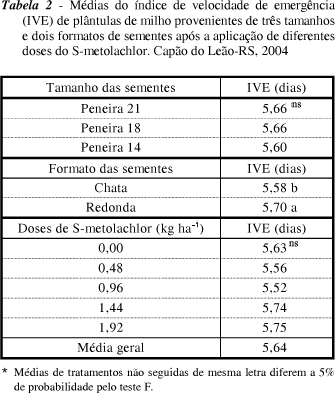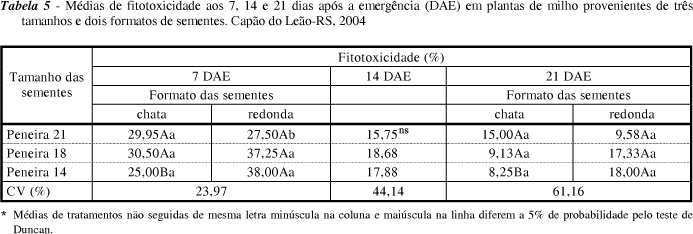This experiment aimed to evaluate the toxicity of the herbicide S-metolachlor in corn plants originated from seeds with different morphological characteristics. It was conducted under greenhouse conditions, in the municipal district of Capão do Leão, RS. The treatments consisted of combinations of three groups of seed size classified in an oblong sieve [seeds retained in sieve width of 14/64 " (sieve 14), 18/64 " sieve (sieve 18) and 21/64" sieve (sieve 21), in two seed formats (crushed and round) and five doses of the herbicide S-metolachlor (0.00; 0.48; 0.96; 1.44; and 1.92 kg ha-1), in 30 treatments. The experiment was arranged in a randomized block design in a factorial scheme (3 x 2 x 5), with four repetitions. After being separated and classified, the seeds were sown in vases filled with homogenized soil. In each vase eight corn seeds were sown at a depth of 3.0 cm, 24 hours after the application of Smetolachlor in pre-emergence. The following evaluations were performed: seedling emergence speed, total number of emerged seedlings; visual injury and height of seedlings at 7, 14 and 21 days after emergence (DAE); dry biomass of the roots and aerial part at 21 DAE. Seed format was found to be an important factor in plant tolerance to the toxic effects of Smetolachlor, applied in pre-emergence, for smaller corn seeds and greater toxicity when the plants were originated from round seeds. Increased S-metolachlor doses caused reductions in dry biomass acquisition, both in the aerial part and in the roots of the corn plants. However, a greater reduction was observed in dry biomass accumulation of the roots.
Zea mays; pre-emergence; acetamides










